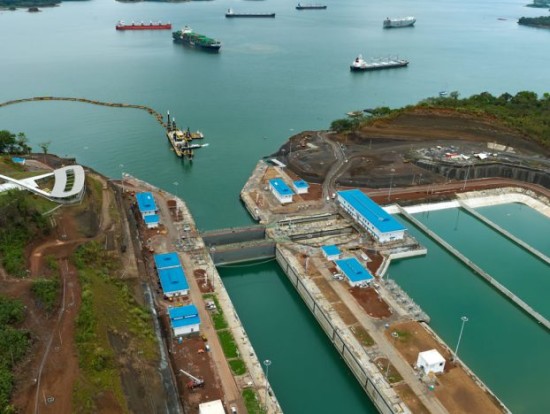The Northern Sea Route (NSR) and Panama Canal transits to Asia are forecast to become major shipping trade lanes for LNG transportation, offering a faster and cheaper means of delivering LNG to the Far East as compared with via the Atlantic.
By 2025, the NSR and Panama Canal transits to Asia could account for 11.25m tonnes and 27.5m tonnes, respectively, equivalent to 12% of forecast total regional demand, according to Suryan Wirya-Simunovic, global energy, LNG and maritime shipping executive, Mitsui OSK Bulk Shipping (Asia Oceania) Singapore.
Wirya-Simunovic said the NSR would likely see exports from other western producers to Far East destinations, while westbound Panama Canal transits would include exports from Trinida & Tobago as well as the North American coast.
To-date, approximately 36-37m tonnes of US Gulf and east coast LNG production and tolling capacity have been contracted either directly or via resale to Asian LNG buyers.
However, ships will face myriad technical and operational challenges when plying the NSR and Panama Canal, Wirya-Simunovic told delegates at the Gastech conference held in Singapore on Thursday.
The NSR route offers significantly shorter route to northeast Asian destinations – some 8,800 km – compared with transhipment through Belgium. But unpredictable weather, icebergs, and lack of groundbased surveillance all pose threats to the safety of the ships, he pointed out.
Yamal LNG in the Far North of Russia plans to ship to Asia via the NSR in the summer season, and is building a fleet of Arc 7 ice-class LNG carriers for this purpose.
He added that the Panama Canal also presents various technical, operational and commercial risks, such as uncertain completion date of the canal expansion, locks’ operating risks, hydrological risks, and potential congestion.
LNG ships may also need to be redesigned or modified to transit the Panama Canal, such as changes to moorings, pilot platforms and shelters, and bridge visibility regulations.
“The Panama Canal has limited or designated throughput for LNG vessels and any incremental capacity increase would still need to be implemented. We are still unsure what the final version will look like for LNG vessels,” Wirya-Simunovic said.
Aside from the novel technologies developed to use the NSR, and expand the Panama Canal, human factors both onshore and at sea are critical to the success of operations on both routes, he highlighted.
“Effective communication between the seafarers and marine ancillary services’ staff, such as the pilots, tug and icebreaker masters, will be of paramount importance,” he said.
Copyright Ships & Ports Ltd. Permission to use quotations from this article is granted subject to appropriate credit given to www.shipsandports.com.ng as the source.
